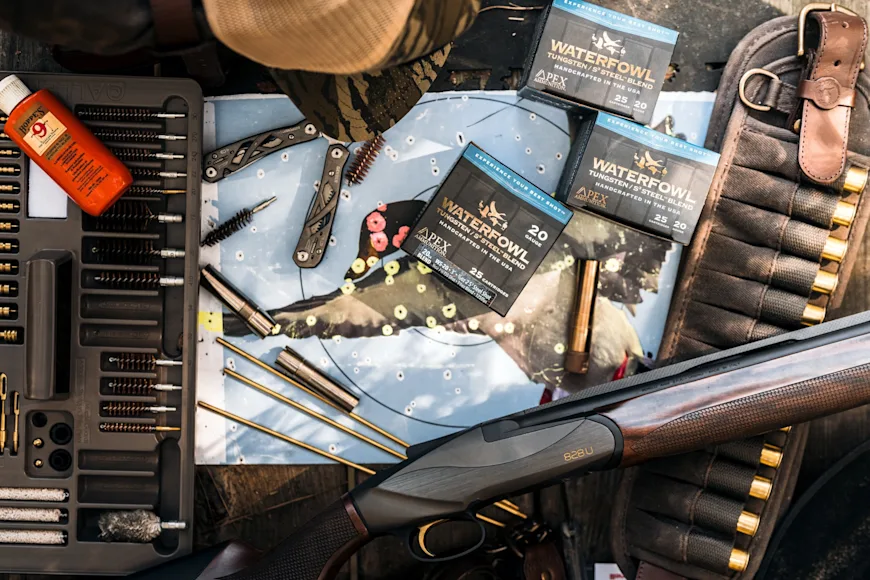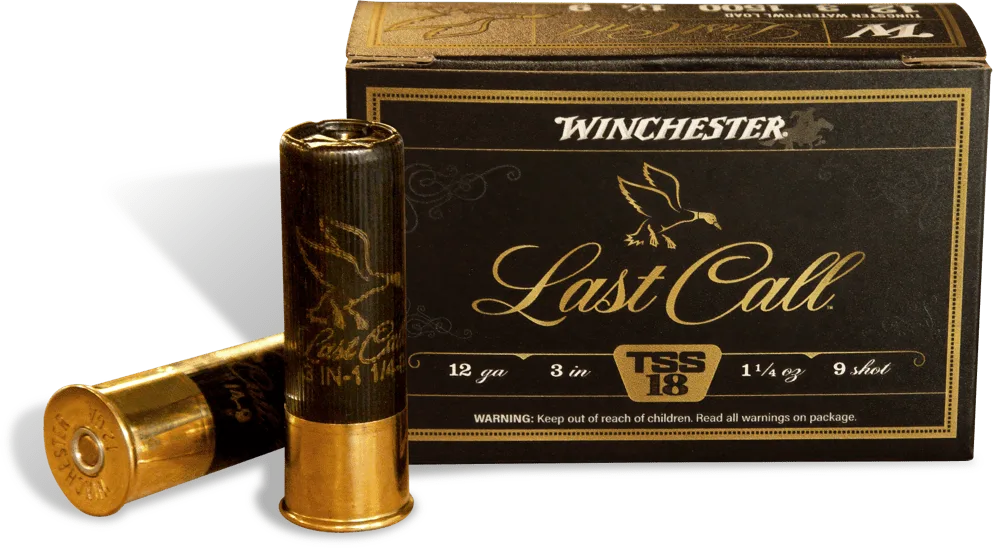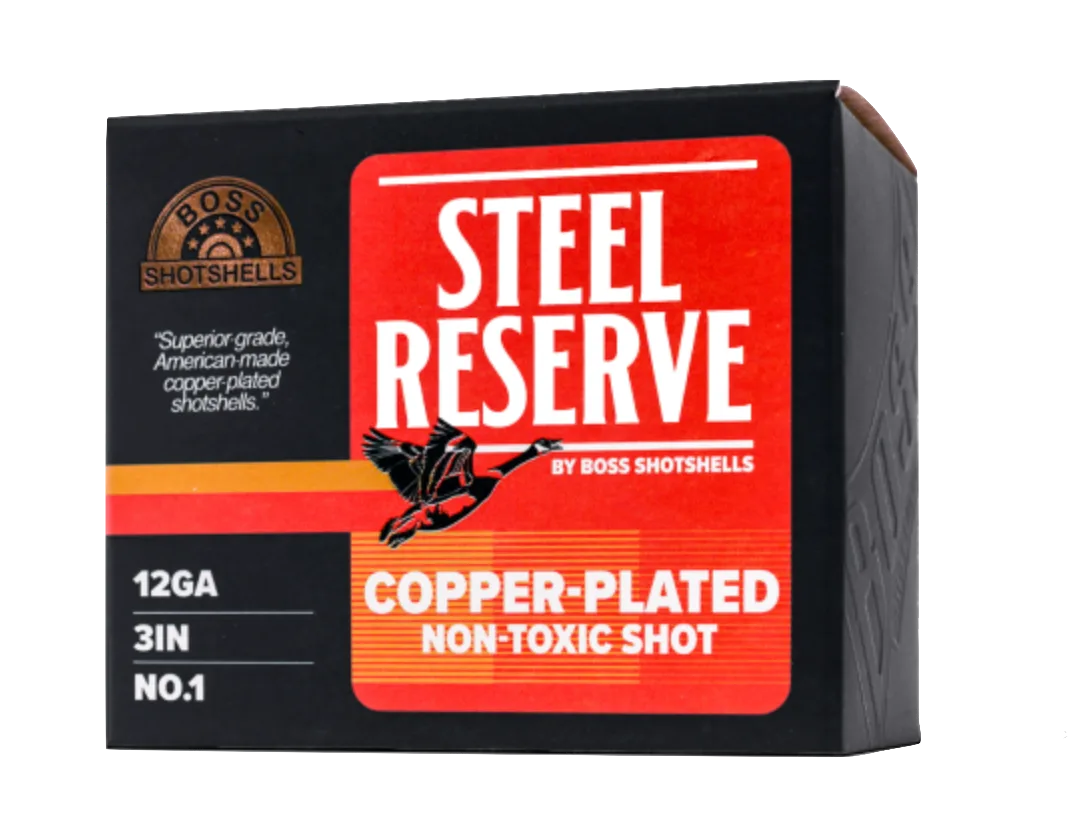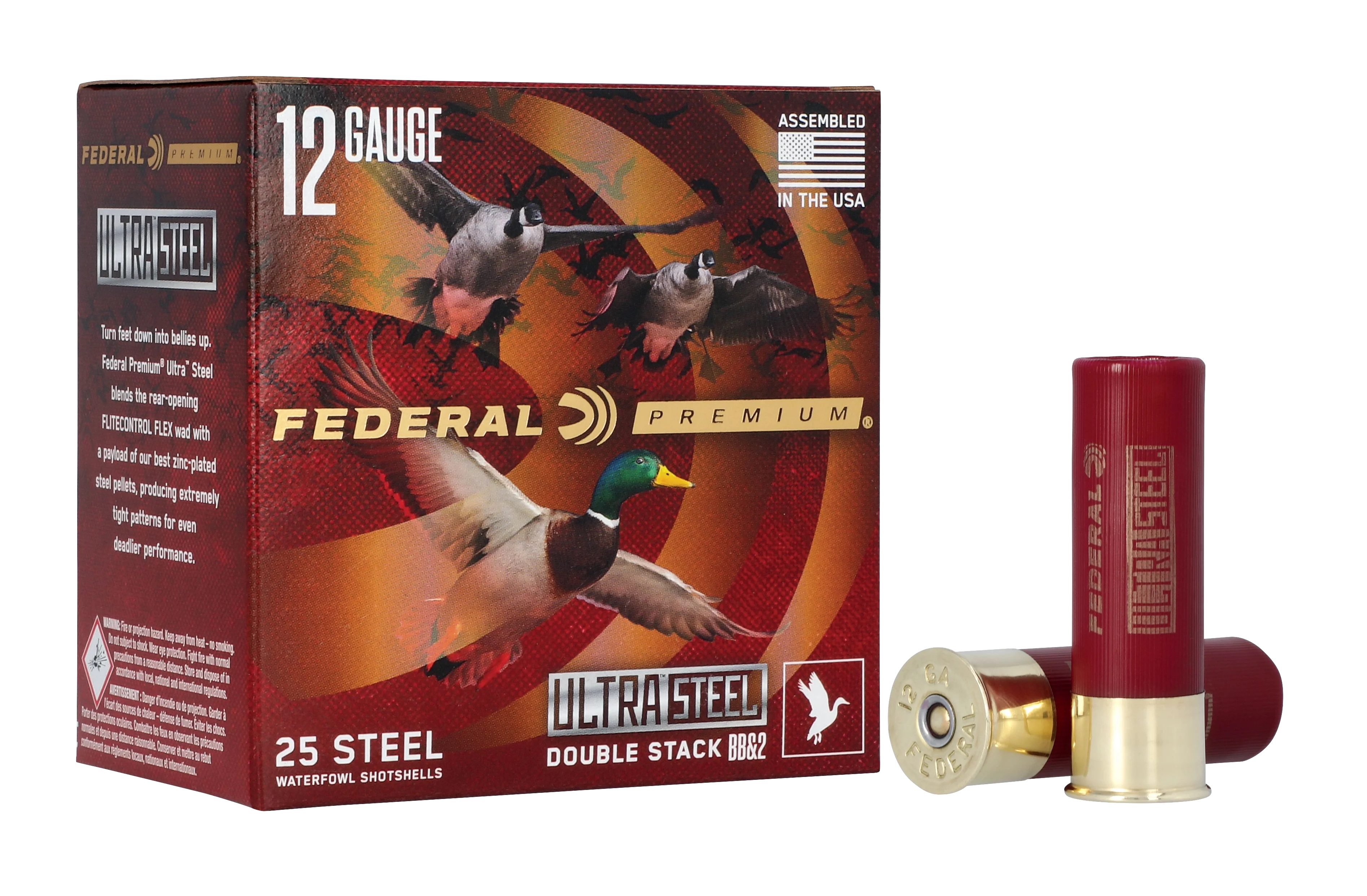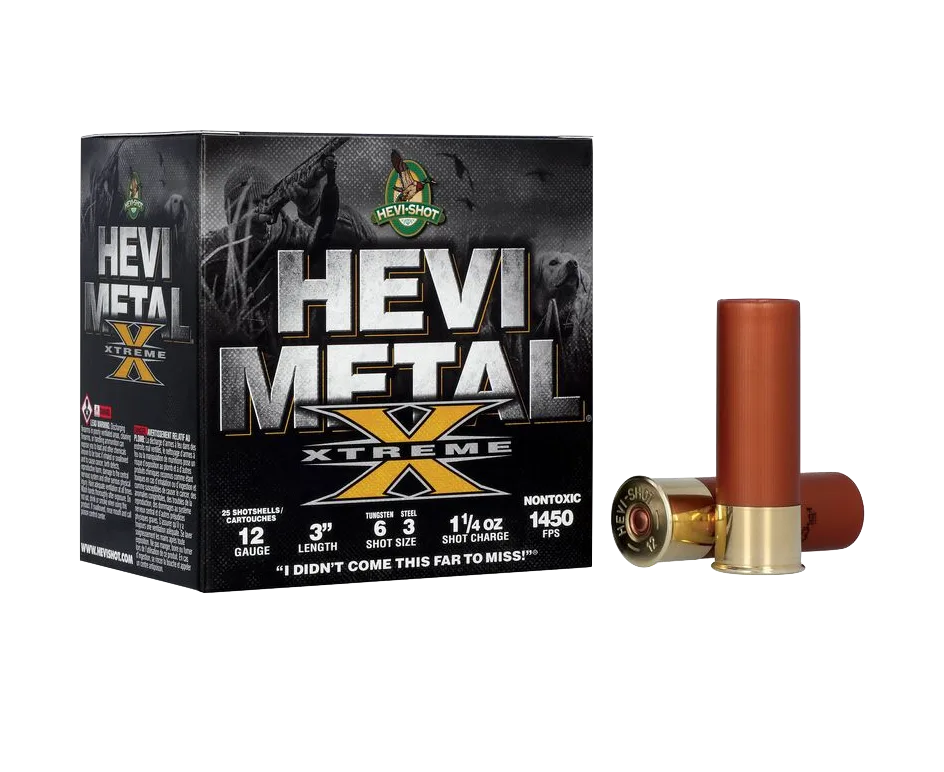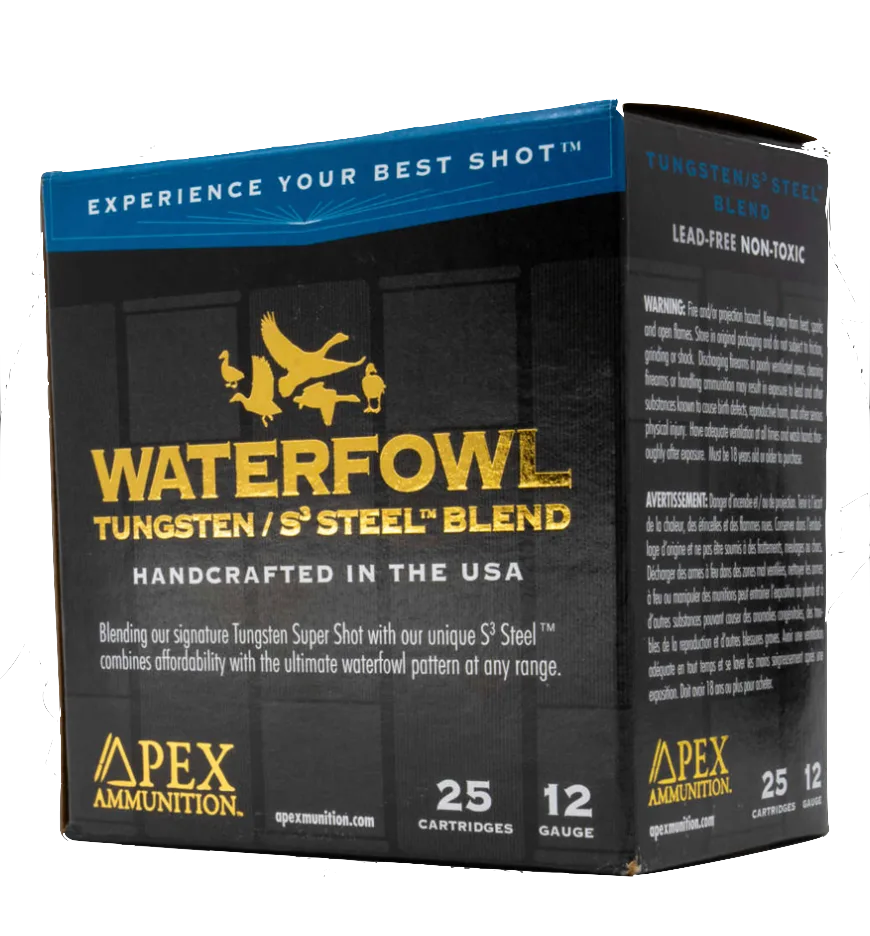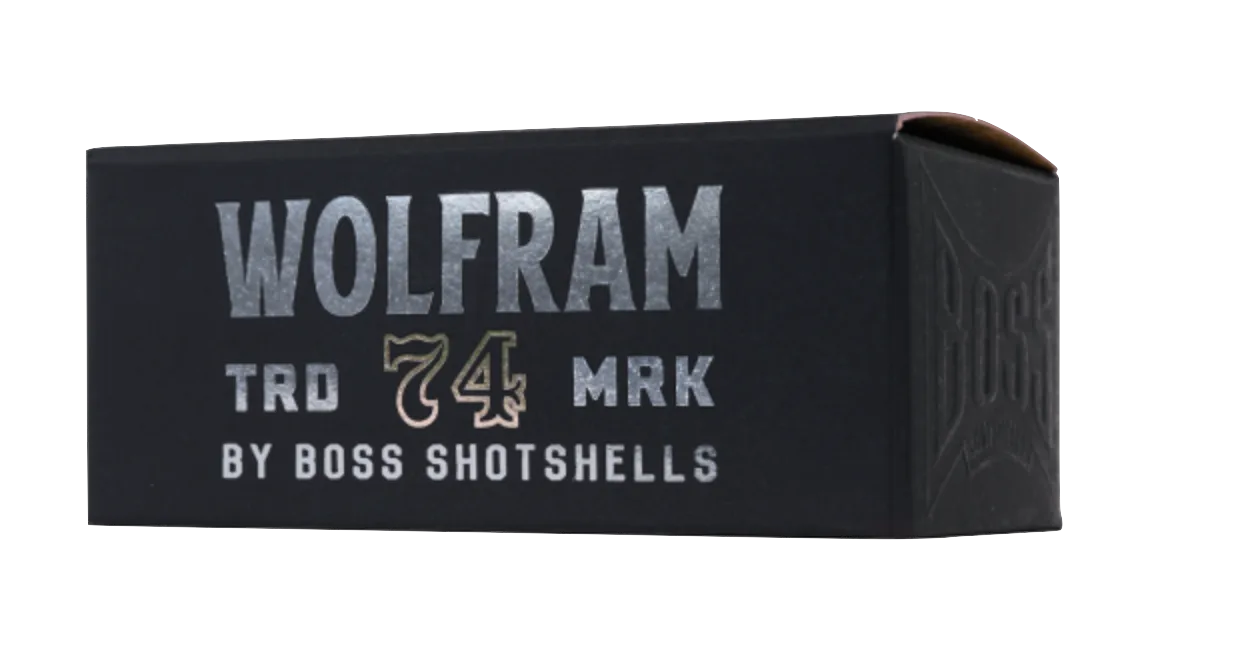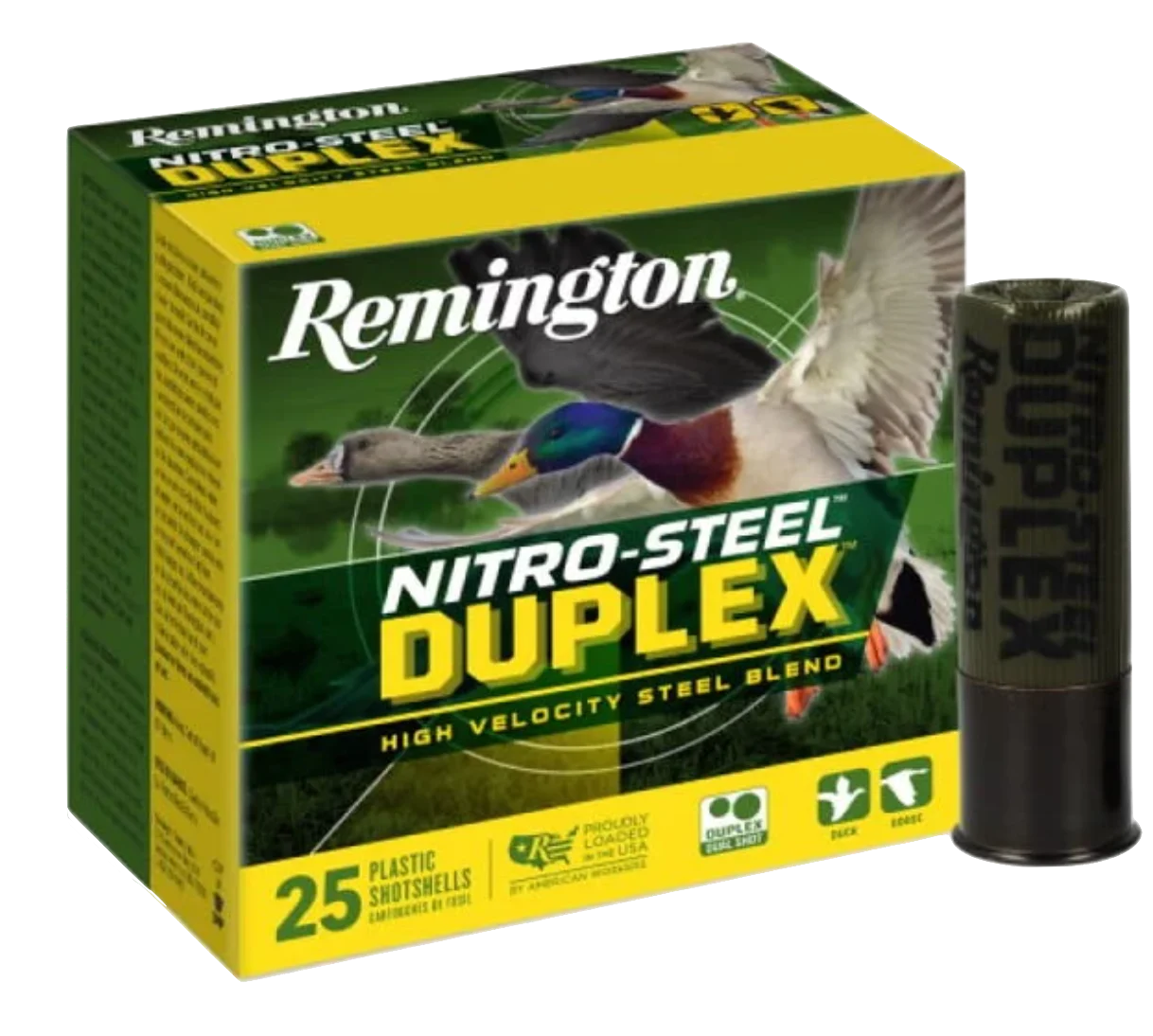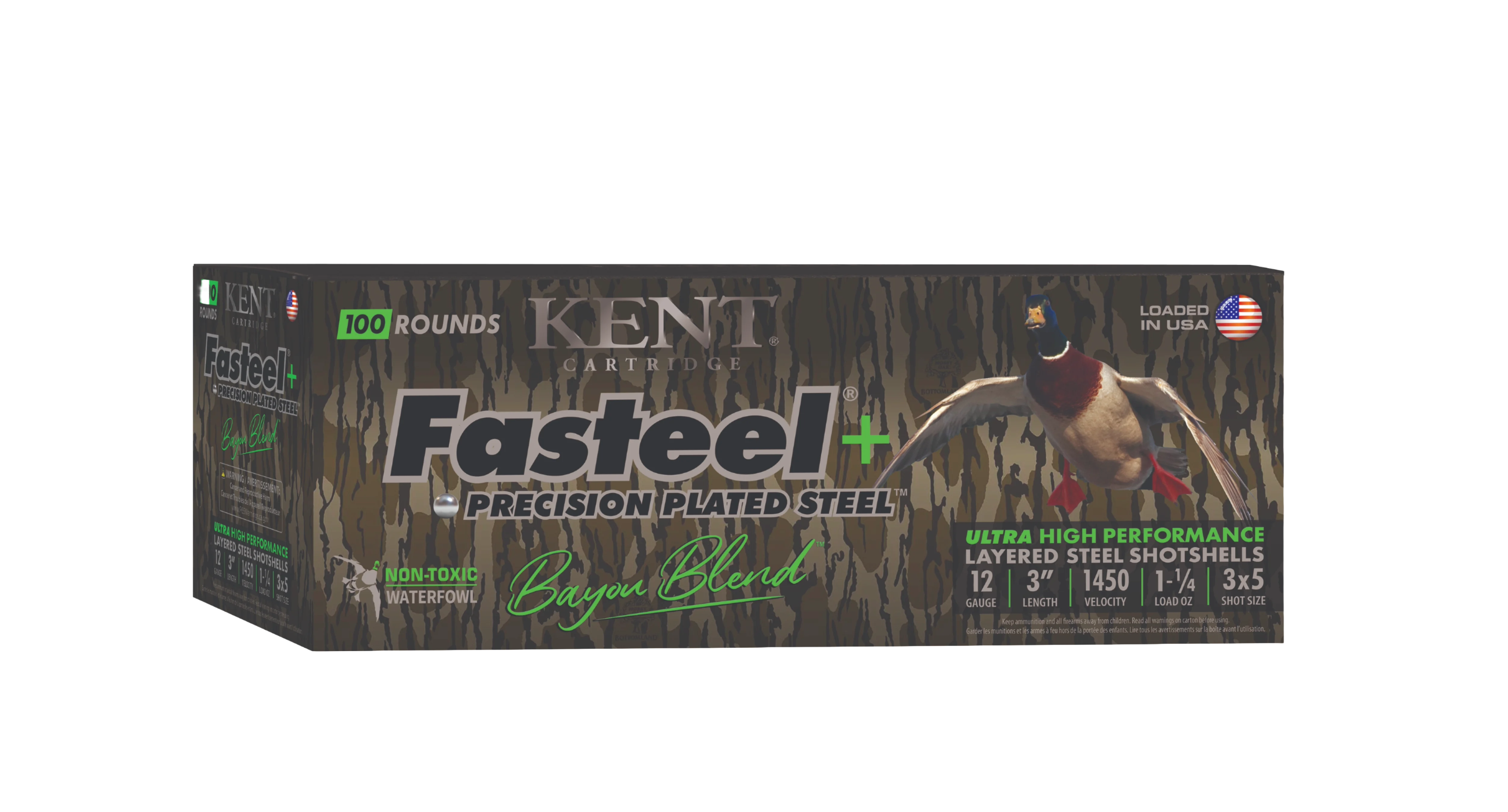This year seems to be all about stacked waterfowl loads, as if suddenly, one shot size wasn’t enough. While the last couple of years have seen a boom in bismuth, a lot of the new loads for 2024 combine two sizes of shot, and sometimes two pellet materials. Stacked loads can produce good patterns and more energy than single-size loads. And, when you combine an inexpensive pellet material like steel with a bit of bismuth, tungsten iron, or TSS, you can, with the right load, gain some of the ballistic advantages of extra-dense premium shot without paying all of the price. Another trend is that some ammo makers are betting waterfowlers will pay top dollar for all-TSS shells, if not for day-in, day-out use, at least for those special hunts.
Since the mandate to hunt waterfowl with non-toxic shot went into effect over 30 years ago, ammo makers have worked continually to make better duck and goose loads. Steel shot still carries a bad reputation; some deserved, some not. Early steel loads were unreliable, inconsistent, and prone to leaking and rusting inside the hull. They were loaded with powder that left plenty of residue behind and with wads that didn’t adequately protect shotgun barrels. They were slow, and hunters didn’t know how to choose the right shot sizes. This is ancient history. All those problems were fixed a long time ago. Steel shot, used within its limitations, is very effective. I’d go further and say for many hunters, steel doesn’t limit them as much as their shooting skills may limit them in terms of effective range.
The fact remains that steel is less dense than lead. Boosting steel velocities and teaching hunters to choose larger shot sizes improved steel. Steel has improved to the point now where you shouldn’t really be blaming steel for your misses and cripples anymore. But there’s always room to sell “new and improved,” both in new shot materials, and in new variations on the theme of “steel shot in a shell.” This year, it’s stacked loads, both steel-steel and steel-tungsten. It’s not a new idea, but it’s the latest trend, and we tried several new duplex loads, as well as some straight-up Tungsten Super Shot (TSS) and regular one-size steel. Here's what we found.
Best Premium: Winchester Last Call
Best Stacked: Federal UltraSteel Double Stack
Best Budget: Boss Steel Reserve

How We Tested the Best Duck Loads
The first step was to examine the exterior of the shells, then dissect each shell, examine the components, and count the pellets to be sure the manufacturer’s specs were accurate. Pattern tests with each shell were conducted at ranges of 30 and 40 yards with appropriate chokes for the load’s intended purpose. The results were tabulated and evaluated for effectiveness. Any failures to function (dead primers, etc) were noted, although this year, aside from one slightly misshapen Hevi-Metal Xtreme hull that still loaded and cycled, there were no ammo malfunctions.
Best Premium: Winchester Last Call
Specs
Gauges: 3-inch 12-gauge, 3-inch 20-gauge, 3-inch 28-gauge, 3-inch .410
Material: TSS
Payloads: 1 ¼ ounce (12-gauge), 1 ounce (20-gauge), 7/8-ounce (28-gauge). ½-ounce (.410)
Velocity: 1500 fps (12-gauge), 1425 fps (20-gauge), 1550 fps (28-gauge), 1350 fps (.410)
Shot sizes: 5 (12-gauge only), 7 (12- and 20-gauge) only, 9
Load Tested: 12-gauge 9 shot
Winchester’s introduction of its all-TSS boutique duck load came as a surprise announcement in early September. Available in four gauges, these all-TSS loads travel at high velocities for maximum energy. The 12-gauge loads even come in TSS 5 shot for pass-shooting big birds. My sample shells were 3-inch, 12-gauge 1500 fps loads of 9 shot. They printed 78 percent patterns at 40 yards from a fairly open RR2 (light Modified) choke, resulting in 350 hits inside a 30-inch circle. That is overkill on any duck. Also, these shells kicked noticeably harder than other 12-gauge shells in the test, most of which were 1 ¼ ounces at 1450. An extra 50 fps should make some difference in recoil, but not as much as I experienced.
Best Uses
Honestly, there are so many pellets in that 1 ¼-ounce load of 9 shot I tested that I might save the remaining shells for turkey season. In larger sizes—7 ½ and 5—you’ll still get great pellet counts. I think the best use of these is to up-gun your smallbore for ducks or geese or, in a 12-gauge, to shoot the 5 or 7 shot at long-range geese. Whichever load you choose, you will get the best results from an Improved Cylinder choke with these dense, tight-patterning shells. Shoot 9s in a smallbore for trophy hunts, as they will not leave big holes in birds you might want to mount.
Best Stacked: Federal UltraSteel Double Stack
Specs
Gauges: 3-inch 12- and 3-inch 20-gauge
Material: Steel
Payloads: 1 ¼ ounce (12-gauge), 1 ounce (20-gauge)
Velocity: 1450 fps (12-gauge) 1400 fps (20-gauge)
Shot sizes: BBx2 (12-gauge only), 2x4 , 3x5
Load Tested: 12-gauge 2x4
Price: $37.99 to $42.99
New this year is Federal’s stacked steel load combining 2 and 4 shot, BB and 2 shot, or 3 and 5 shot. I tested the 2x4, which contains equal parts of the larger and smaller shot, resulting in a payload of 183 pellets. Now, that is roughly the same count as if you split the difference and used a 1 ¼-ounce load of 3 shot (197 pellets in 1 ¼ ounces). A good stacked all-steel load puts the big pellets in front and lets the smaller pellets draft behind them, improving patterns. These loads, packed into Federal’s FliteControl Flex wad that holds shot together several feet out of the muzzle, patterned extremely well. They recorded 77 percent patterns with a factory Modified in a Benelli, which is solid Full choke performance and put between 140 and 150 pellets in a 30-inch circle.
Best Uses
This load has enough density to shoot effective patterns for ducks of all sizes. Because 4 shot is fairly small, I’d keep distances closer and use this as an over-decoy load.
Best Budget: Boss Steel Reserve
Specs
Gauges: 3-inch 12-gauge, 3-inch 20-gauge
Material: Steel
Payloads: 1 3/8 ounces or 1 1/8 ounces (12-gauge), 7/8 ounce (20-gauge)
Velocity: 1450 fps, 1 3/8-ounce 12-gauge, 1500 fps 1 1/8-ounce 12-gauge and 20-gauge
Shot sizes: 1 (12-gauge only), 3
Load Tested: 12-gauge, 1 3/8-ounce 3 shot
Price: $24-$26 per 20
One of the two new offerings from Boss marks a departure from its bismuth and tungsten lineups. Steel reserve is straight steel shot with no gimmicks, all one size. It’s designed to be an affordable load for those who don’t need the added range of more expensive bismuth or tungsten. My test shells contained 1 3/8 ounce payloads of 3 shot (about 217 pellets) packed in Boss’s bio-tech-treated wad designed to break down in the environment. The pellets were very round and copper-plated to improve their flow through the choke.
With a muzzle velocity of 1450 fps, they are right in line with most steel shot, speed-wise. Boss recommends shots inside 30 yards with these pellets. I believe they are more ballistically capable, but I also like the idea of limiting shots to shorter ranges regardless of pellet material. Taking Boss at their word that these were for short and mid-range, I patterned the 3s at 30 yards with a Rob Roberts RR2 choke. At that range, the RR2, essentially a Light Modified, printed terrific 78 percent patterns.
Best Uses
Boss keeps the Steel Reserve line simple, loading two sizes of shot: 1s for geese over decoys and 3s for ducks. That’s exactly the right advice. Shoot these if you like your birds cupped up over the decoys, and you don’t want to spend a ton of money every time you pull the trigger. Use a Modified or more open choke.
Hevi-Metal Xtreme
Specs
Gauges: 3-inch 12- and 3-inch 20-gauge
Material: Steel and HeviXII
Payloads: 1 ¼ ounces (12-gauge), 1 1/16 ounces (20-gauge)
Velocity: 1450 fps (12-gauge) 1350 fps (20-gauge)
Shot sizes: BBx2 (12-gauge only), 4x1, 3x6
Load tested: 20-gauge 4x1
Price: $59.99-$61.99 per 25
Best use: Geese over decoys (20-gauge 4x1)
HeviShot Extreme HeviMetal combines the dense, original HeviShot with steel in a stacked load. Like all HeviShot shells, the first thing you encounter is the flax-seed filler on top, then steel pellets, then a little under half an ounce of HeviShot 4s. The steel pellets were uniform and round. As always, the HeviShot was misshapen and comprised a variety of sizes. The load was encased in Federal’s rear-braking FliteControl wad.
The 20-gauge HeviMetal comes in combinations of 3 steel and 6 Hevishot and 1 steel and 4 HeviShot. I tested the 1x4 as I was curious if it would make a good combination duck/goose load. For that purpose, I want to see over 90 hits in a 30-inch circle at the distance I’ll shoot my birds. Typically, 55 to 60 hits on target is enough for geese, but a mallard is small enough that it takes a minimum of 90 hits, and I prefer 100.
At 40 yards with a Modified choke, these 1 1/16-ounce loads printed 70 percent patterns, which is a strong Modified, putting 83 pellets in a 30-inch circle. That’s enough for a goose, but a bit light for a mallard at that range. Over decoys, say, on a field goose hunt that might involve some ducks, these 4x1s would beef up a 20-gauge’s chances, although they don’t make it a 12.
Best Use
Geese over decoys (20-gauge 4x1).
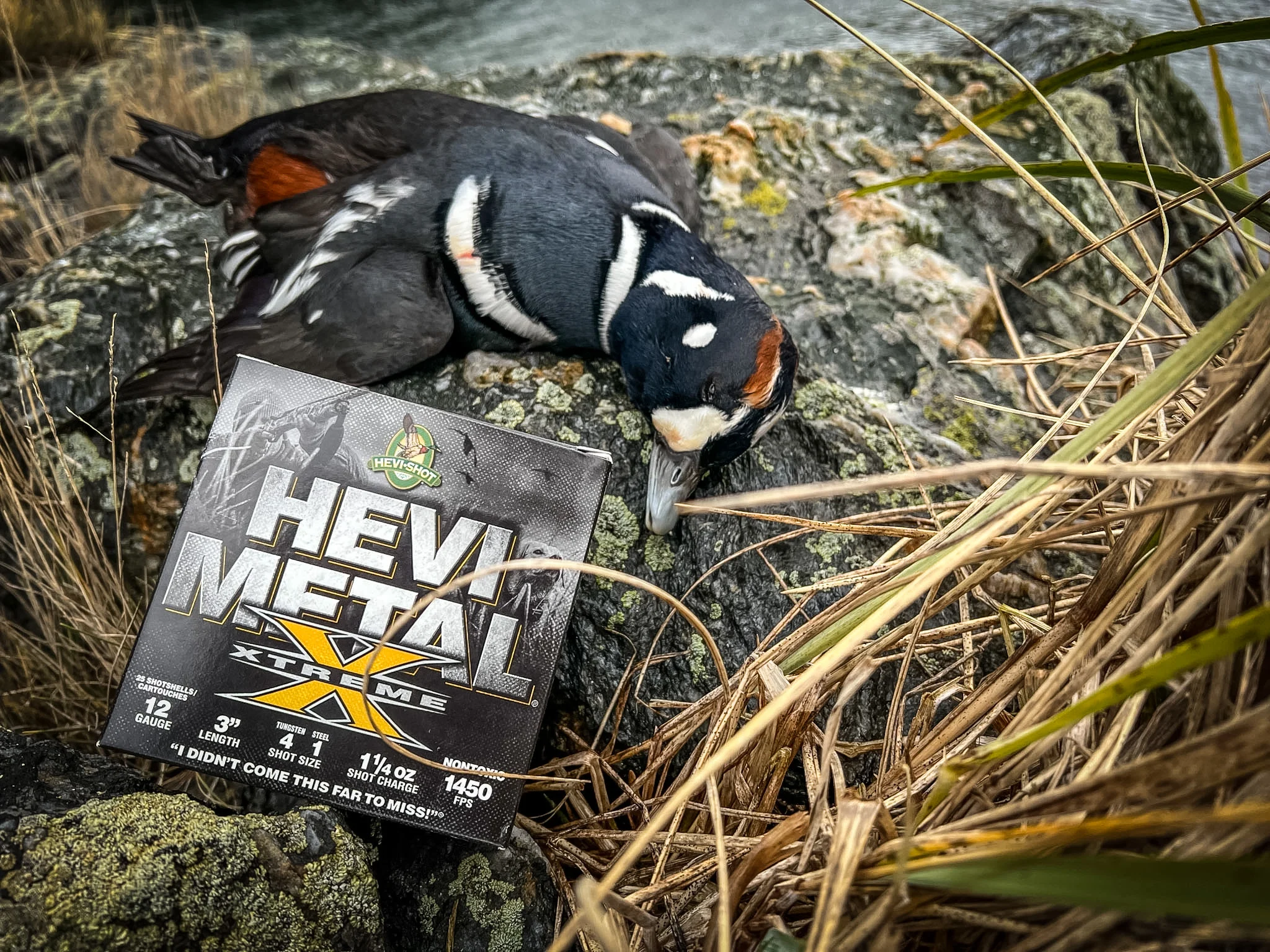
Apex TSS/S3 Steel Blend
Specs
Gauges: 3-inch 12- and 3-inch 20-gauge
Material: Steel and TSS
Payloads: 1 ¼ ounces (12-gauge), 1 1/8 ounces (20-gauge)
Velocity: 1450 fps (12-gauge) 1250 fps (20-gauge)
Shot sizes: BBx7 ½ (12-gauge only), 2x7 ½ , 4x7 ½
Load Tested: 20-gauge 2x7 ½
Price: $468 per 250
Apex is best known for its lethal TSS turkey load, but they also offer deadly all-TSS waterfowl ammo for those who can afford to spend $5 per shell. For the rest of us, they load a pinch of that TSS behind steel pellets to make a stacked waterfowl load. I have had good success with the 12-gauge version of this shell. The 20-gauge combines 7/8 ounces of 2 or 4 steel with ¼ ounce of TSS 7 ½. The TSS serves to increase pellet count. The 2x7 ½ I shot contained a total of 160 pellets.
From my Beretta 390 with a Modified choke, I shot the load at 30 yards, replicating over-decoy distances. For whatever reason, patterns varied wildly in my gun, from as low as 50 percent to as high as 90 percent. All were enough for a duck or a goose over decoys, and perhaps with a different choke, you could get more consistent performance, as I have with the 12-gauge shells.
Best Use
Ducks over decoys and the occasional goose. The added small TSS increases the chance of head-neck hits for instant kills where you need ducks dropped right there, as in flooded corn.
Boss Wolfram 20 Gauge
Specs
Gauges: 2 3/4-inch 12- and 2 3/4-inch 20-gauge
Material: TSS
Payloads: 1 ounce (12-gauge), 7/8 ounces (20-gauge)
Velocity: 1450 fps
Shot sizes: 7 and 9
Load Tested: 20-gauge 7
Price: $52-$57 per 10
Boss, known for bismuth waterfowl and TSS turkey loads, now offers premium all-TSS waterfowl ammo with its new Wolfram line. At over $5 per shell, these are not shells for everyday use. The 20-gauge loads contain 7/8 ounces of 7 or 9 shot at 1450 fps. The pellets have a small amount of buffer, and they are copper-plated. TSS pellets are so hard that buffer and plating do nothing to keep them round. Instead, the buffer helps prevent pellets from lodging in the wad, and the copper plating adds lubricity so the pellets flow better through chokes. The wad itself is more of a target-style wad with a collapsing post between the shot cup and the powder seal that helps reduce recoil.
The shells were very soft to shoot. TSS shoots tight patterns because of its density and hardness, which prevents any deformation. The patterns I shot with a Modified choke averaged 95 percent, which is too tight for shorter-range shooting. Improved Cylinder or even Skeet would open this up a bit for mid-range shots. Boss claims 7 shot is big enough for geese, while the 9 shot is more of a duck load.
Best Use
These loads turn your 20 into a gun that can outshoot any 12 unless that 12 is also loaded with TSS. They would be perfect for that trophy eider hunt or any other trip where you need to be absolutely certain you can put birds down for keeps. Use IC or Light Modified chokes.
Remington Duplex 2x4
Specs
Gauges: 3-inch 12-gauge
Material: Steel
Payloads: 1 ¼ ounces
Velocity: 1450 fps
Shot sizes: BBx4, 2X4, 2x6
Load Tested: 2x4
Price: $42.99 per 25
This isn’t Remington’s first stacked-load rodeo. Remington began loading stacked loads under the name “Duplex” in the 90s, and these shells have the same drab green hulls and black-oxide heads to help them blend in during the hunt. The shells come in 2x4, 2x6, and BBx4. Not all shells deliver consistent patterns shot-to-shot. These did. The 2x4 loads I tested patterned within a few percentage points of one another, averaging 53 percent at 40 yards. I think they would have done better with a choke tighter than the Rob Roberts RR2 mid-range choke I tested them with, although I also think the shell combinations Remington offers are best for ranges inside 40, anyway.
Best Use
I am going to pick on Remington’s marketing claims here, although they are not the only ones who explain stacked loads the wrong way. They say the small pellets give you density up close, and the big pellets give you more energy at long range. That’s kind of true, but a bit misleading. Choose your stacked loads based on the maximum range of the smaller shot, and let the big pellets add energy at mid-ranges. Shoot these 2x4s at ducks over decoys out of a Modified choke.

Kent Fasteel + Bayou Blend
Specs
Gauges: 3-inch 12-gauge, 3-inch 20-gauge
Material: Steel
Payloads: 1 ¼ ounce (12-gauge), 1 ounce (20-gauge)
Velocity: 1450 fps (12-gauge), 1350 fps (20-gauge)
Shot sizes: 3x5
Load Tested: 12-gauge 3x5
Price: $129-$139 per 100
Kent extends its stacked Fasteel plus line with a 1 1/4, 3-inch 12 gauge blend of 3/5 shot. Called “Bayou Blend,” it’s a close-quarters duck load. Fasteel + combines two sizes of plated steel shot, and these are sold in sleeves containing four boxes. This blend of smaller sizes contains a total of 254 pellets. In keeping with the intended swamp/timber purpose of Bayou Blend, I patterned them at 30 yards through a Rob Roberts RR2, which I would normally choose for over-decoy shooting. The patterns were broad and averaged around 70 percent at 30 yards, which translates into around 175 pellets in a 30-inch circle, more than enough density even for small ducks like teal.
Best Use
Intended for timber shooting and Louisiana marshes where medium and small ducks are predominant. Bayou Blend would also make a great September teal load. Use an open choke and take close shots with this ammo, and it will give you the broad, dense patterns you need to anchor ducks. Use a Modified or more open choke.
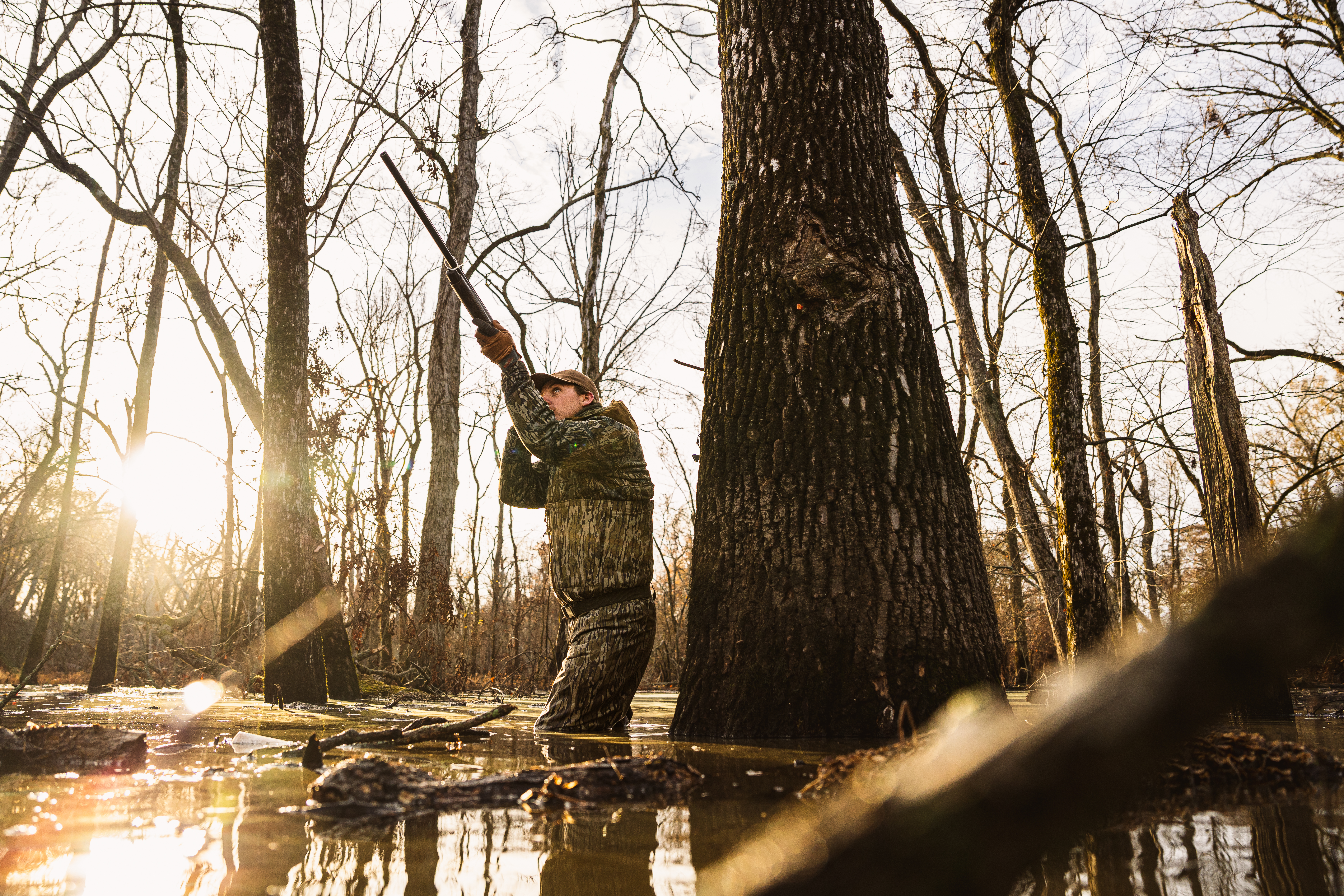
Things to Consider When Buying Waterfowl Ammo
A shotshell is only one part of a system made up of the shell, the gun, and the choke. You need to choose choke/load combinations that will perform best for the type of shooting you do with your shotgun. Pattern-testing your gun is the way to learn what it does at various ranges. Shoot a big sheet of paper, then draw a 30-inch circle with the densest part of the pattern at the center. Check to be sure the pellets are spread fairly evenly across the circle. A good pattern will be denser in the center and more open at the fringes, but not so dense that it tears up birds and is easy to miss with because it’s so small. Shoot at the range you expect to shoot in the field. Shoot at least three patterns at each distance with each choke/load combination, although shooting five patterns is better, and ten gives you the clearest idea of what’s going on. There can be lots of variability from shot to shot.
In general, you should choose very open chokes for TSS, which typically are small, hard, tight-patterning pellets. Improved Cylinder is a good place to start testing TSS loads. Likewise, Hevishot HeviXII is known to pattern efficiently, so start with open constrictions there, too. For steel, usually, a Light Modified or Modified choke is a good choice for over-decoy shooting, and Improved Modified is best at longer ranges. Bismuth, unless it’s buffered like Winchester or Boss War Chief, often patterns inefficiently because the load loses pellets to shattering. Pick a tighter choke to compensate, such as Modified for close range or Improved Modified.

FAQs
Q: Is 2 or 3 shot better for ducks?
Both 2 and 3 shot are effective pellet sizes for ducks when you’re using steel shot. Three shot has a higher pellet count per ounce (153 for 3s vs 124 for 2s), so it can put more hits on target. On the other hand, 2 shot will have more energy. My advice is to shoot 3s for ducks over decoys if there is no chance of geese, and pick 2s if Canadas, snows, or specks might visit your spot.
Q: What is the best load for shooting ducks?
The best load for shooting ducks combines adequate pellet numbers and energy to put enough lethal hits on a duck and also has manageable recoil so you can shoot it effectively. If money is no object, TSS or Tungsten-Iron HeviXII are the best loads because they are very dense and retain a lot of energy, even in small pellet sizes that give you high pellet counts. In steel shot, a 12-gauge, 1 ¼-ounce load of 2 or 3 shot for big ducks like mallards or 4 shot for wood ducks and teal is usually best and also most cost-effective.
Q: What is the best shot weight for duck hunting?
Assuming “shot weight” means the weight of the payload in the shell, that varies by pellet material. In steel, loads of 1 1/8-ounce to 1 1/4-ounce comprise enough pellets of the appropriate size to do the job. Loads with 1-ounce to 1 ¼-ounces of bismuth or tungsten-iron shot are a good weight range, and in TSS, you can go down to 7/8 ounce or even 1/2 -ounce because those very dense pellets allow you to choose small shot sizes so you get plenty of pellets plus plenty of energy.
Q: What gauge is best for duck hunting?
The 12-gauge remains the standard duck gun, as it should. It’s the most versatile gauge in terms of the range of loads you can find for it. Also, it’s the best choice if you want to keep costs down and shoot steel pellets because the 12-gauge hull has the large capacity needed to hold adequate amounts of big steel shot. Some disagree, but I don’t think 3 1/2-inch shells are necessary for ducks. A 3-inch shell holds enough shot and 3 ½-inch shells kick hard.
Smaller gauges, 20- and 28-gauge, are currently popular. They make good waterfowl guns, although their smaller hulls work best with denser pellets like bismuth, HeviXII, and TSS, where you can choose smaller pellets and fit enough in the hull to produce adequately dense patterns. If you shoot steel in a 20-gauge, your range will be limited both because pellet counts are lower and because 20-gauge hulls can’t contain adequate payloads of bulky pellets like BBs.
Best Duck Loads: Final Thoughts
Waterfowl range in size from one-pound teal to 13-pound Giant Canadas, and they can be shot at ranges from 20 to 50 yards. There are shells on the market for any waterfowling situation, but it can take time to figure out which ones are the best for the type of hunting that you do. One way to tip the odds in your favor is to pattern-test your ammunition. Another is to practice at skeet, sporting clays, and trap in the off-season. And, just as important, no matter what ammunition you shoot, try to limit yourself to close-to-medium-range shots.

